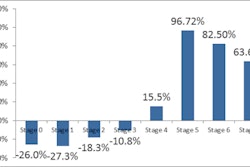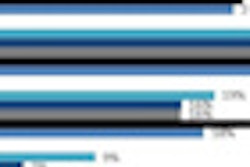With the goal of improving radiation therapy safety, the American Association of Physicists in Medicine (AAPM) has published technical recommendations to aid developers of databases that are designed to track and record treatment errors and near misses.
Such incidents are thought to be rare in radiation therapy, but determining the actual error rates is challenging. Not only is there a lack of data, there is professional disagreement over the terminology that should be used and the relevant clinical end points.
The creation of standardized databases that are specific to medical disciplines for incident learning -- the process of reporting an incident, analyzing it in depth, and developing interventions to prevent it from happening again -- would be especially beneficial for radiation oncology departments, according to a special report in Medical Physics (December 2012, Vol. 39:12).
The article represents the output of the Work Group on Prevention of Errors in Radiation Oncology, which was formed in 2011 by AAPM because it felt that discipline-specific incident learning systems would significantly improve the practice of radiation oncology. AAPM had also identified that there was no published consensus on the structure, design, and technical standards for a radiation-oncology-specific system.
The work group consisted of a panel of experts representing all major North American radiation oncology organizations, as well as users and developers of public and in-house reporting systems with more than two decades of collective experience, according to lead author Eric C. Ford, PhD, associate professor of radiation oncology at the University of Washington Medical Center, and co-authors.
In addition to AAPM, the panel included representatives of the American College of Radiology, the American Association of Medical Dosimetrists, the American Society of Radiologic Technologists, the American Society for Radiation Oncology, the Canadian Organization of Medical Physicists, the Conference of Radiation Control Program Directors, and the U.S. National Institutes of Health.
The Medical Physics report includes consensus recommendations focused on five areas: definitions, process maps, severity metrics, causal taxonomies, and data elements. It specifies a lexicon of common terminology for incident reporting that is specific to radiation oncology, as well as precise definitions of terms.
The report places great emphasis on process mapping, which involves defining the steps in the process of performing a treatment and organizing them into a visual map. The workgroup identified 91 common steps for external-beam radiation therapy (EBRT) and 88 common steps for brachytherapy. The objective was to create a comprehensive set of steps so that incidents could be codified in detail to elements of the map, aiding analysis and triage.
These steps include "safety barriers," or critical control points, which are any process steps with a primary function of preventing errors or mistakes from occurring or propagating throughout the radiotherapy workflow.
The work group also created a 10-level medical severity scale designed to reflect the observed or estimated harm to a patient, a radiation-oncology-specific root causes table to facilitate and regularize root-cause analyses, and recommendations for data elements and structures to aid the development of electronic databases. The recommendations also contain a list of key functional requirements for any reporting and analysis system.
"It must be recognized that implementing incident reporting and learning on a wide scale within radiation oncology represents a considerable challenge," the authors wrote. "It will require additional clinical resources as well as a change in mindset and culture with an increased emphasis on incident learning to uncover latent error pathways. While the challenges are significant, the impact of this initiative cannot be overstated."
The report of recommendations was prepared to promote the use of incident-learning databases by any hospital or cancer treatment center offering radiation therapy anywhere in the world. It can be accessed free of charge by clicking here.



















